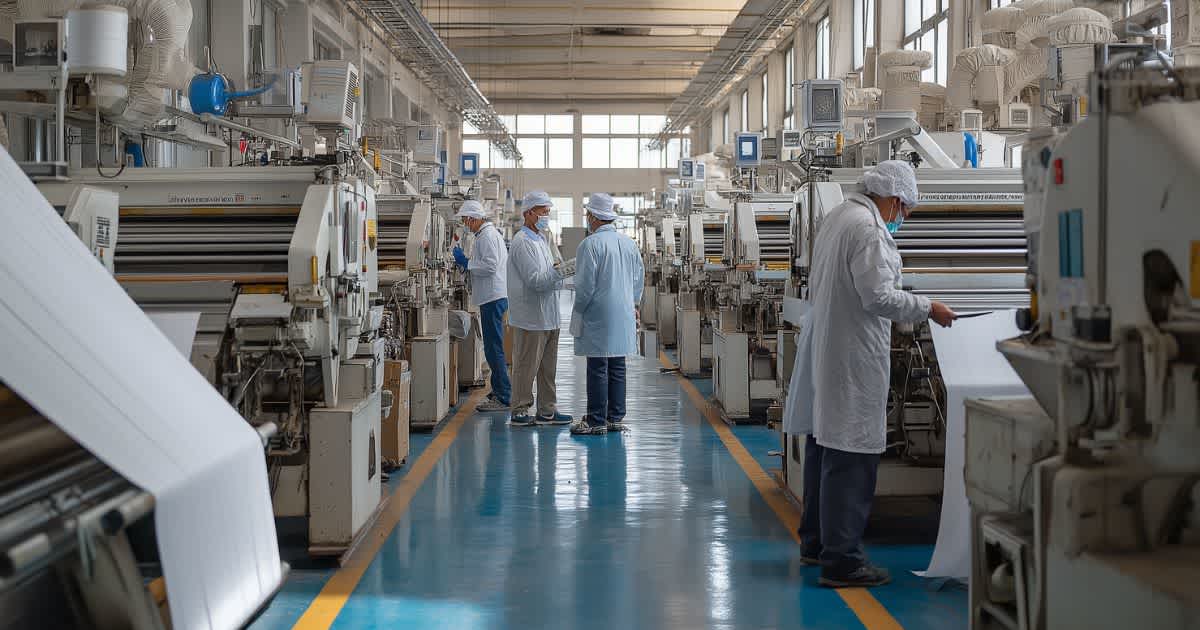Made in Germany vs. Made in China
Reading Time: 5 min.

In a globalised world, it is more important than ever for companies to choose the right procurement strategy. Quality labels continue to play an important role in this. We take a close look at ‘Made in China’ and ‘Made in Germany’ and reveal the competitiveness of both labels.
What does ‘Made in Germany’ stand for?
Made in Germany is still a label that enjoys an excellent reputation worldwide. Since its introduction in the 19th century, the quality seal has developed from an originally negative label to a symbol of precision, reliability and high-quality German products. In sectors such as mechanical engineering, the automotive industry and consumer goods in particular, Made in Germany is synonymous with precise manufacturing technologies and durability.
Six key points for Made in Germany:
Outstanding reputation: Known worldwide for precision, reliability and high-quality products, especially in mechanical engineering and the automotive industry.
High quality: Strict quality controls and advanced manufacturing technologies ensure excellent product quality.
Premium brand value: German products are globally recognised as premium and consumers are willing to pay more for them.
Strong innovative strength: Leading in traditionally engineering-orientated sectors such as mechanical engineering and the automotive industry.
Sustainability and environmental standards: Strict environmental regulations and sustainable production processes, focus on recycling and resource efficiency.
High production costs: Under pressure due to high wages and expensive infrastructure in global competition, but quality remains the focus.
Is the image of quality still relevant?
Despite the fact that the Made in Germany seal of quality continues to be highly valued, the general conditions have changed in the meantime. In particular, high labour costs and increasing competition from lower-cost countries are putting German companies under pressure. They must maintain their competitiveness without compromising on quality.
At the same time, global consumer behaviour is evolving. For many consumers, Made in Germany products still stand for premium products, while Made in China is often still perceived as a low-cost alternative. However, Chinese companies have made enormous progress in recent years and are increasingly striving to establish the Made in China seal of quality on a par with Made in Germany.
What does Made in China stand for?
The Made in China label has undergone a remarkable development, particularly in recent decades. While it was initially perceived mainly as a sign of cheap mass production, the image has changed enormously thanks to technological innovations and ambitious political initiatives such as ‘Made in China 2025’ (MIC25).
The goal is ambitious: by 2025, China is to become a leading global player in high-tech sectors such as robotics, artificial intelligence and electromobility. It is therefore clear that Chinese companies are striving for more than just being a low-cost alternative to Western brands. Rather, they want to establish themselves as innovators and technology leaders in currently emerging sectors.
The success is impressive: Thanks to the increased quality of many products and the use of advanced manufacturing technologies, especially in the electronics industry, Made in China is now perceived much more positively.
Six key points for Made in China:
Low production costs: Significantly lower labour costs compared to Western countries enable lower prices.
High scalability: Chinese companies benefit from flexible and scalable supply chains.
Technological innovation: Rapid progress in high-tech areas such as electronics, artificial intelligence and telecommunications.
‘Made in China 2025’ goal: China's strategic plan to become a leader in high-tech sectors such as robotics and electromobility by 2025.
Growing quality: Improved product quality and technological development, especially in the electronics industry.
Sustainability initiatives: Progress in CO₂ reduction and renewable energies, although there is still some catching up to do.
What differences there are between the quality seals
Unfortunately, prejudices against Made in China still persist, especially when it comes to product quality. Traditionally, Chinese mass-produced goods have been seen as cheap but often of inferior quality, especially in areas such as clothing, toys and basic consumer goods. But what about important factors such as production costs, sustainability, innovation and technology today?

Production costs and -processes
Labour costs in China are generally significantly lower than in Germany. This enables Chinese companies to produce products at a fraction of the cost. They also benefit from the high flexibility and scalability of their supply chains. The use of advanced manufacturing technologies, such as automation and robotics, is also increasing in China, which further boosts efficiency.
Germany, on the other hand, scores highly with its state-of-the-art production processes and stricter quality controls. However, these advantages are offset by higher labour costs and more expensive infrastructure.
Sustainability and environmental standards
Germany is known for its strict environmental regulations and sustainable production practices. Recycling and resource efficiency are at the centre of many German manufacturing processes. As a result, products made in Germany are often perceived as more environmentally friendly.
In China, on the other hand, environmental issues are increasingly on the political agenda. With initiatives to reduce CO₂ emissions and a stronger focus on recycling and renewable energies, China is making significant progress. However, there is still a long way to go to achieve sustainable production.
Technological innovation
Both Germany and China are leaders in terms of technological innovation, albeit in different areas. Germany enjoys an outstanding reputation as an ‘engineering nation’, particularly in automotive and mechanical engineering. Chinese companies, on the other hand, are making impressive progress in sectors such as electronics, telecommunications and artificial intelligence.
However, the ambitious ‘Made in China 2025’ program shows that China is striving to further strengthen its technological position. The question of technological competitiveness will be reflected even more clearly in market perception in the coming years.
What does the future hold for both quality seals?
The future of Made in Germany and Made in China is strongly influenced by technological developments and global market changes. While Made in Germany will continue to stand for precision and reliability, Made in China is developing into a seal of quality that increasingly stands for innovation and technological excellence.
Prejudices are increasingly being refuted, as Chinese companies have made enormous progress in terms of both technology and quality. And with the continuous improvement of production standards and the use of advanced technologies, Made in China is likely to gain further prestige in the future.
Line Up procures the best of both worlds
Line Up works with over 70% of its manufacturing contacts in the Far East, proving that high-quality products can also be produced in China. We offer you the opportunity to choose the best options for your needs - whether Made in China or Made in Germany.
What's more, our in-depth understanding of both markets enables you to make informed decisions that help you remain competitive while ensuring high quality.
Simply get in touch with us via our contact form.
Newsletter Registration
Sign up now for our free Line Up newsletter and stay up to date.





